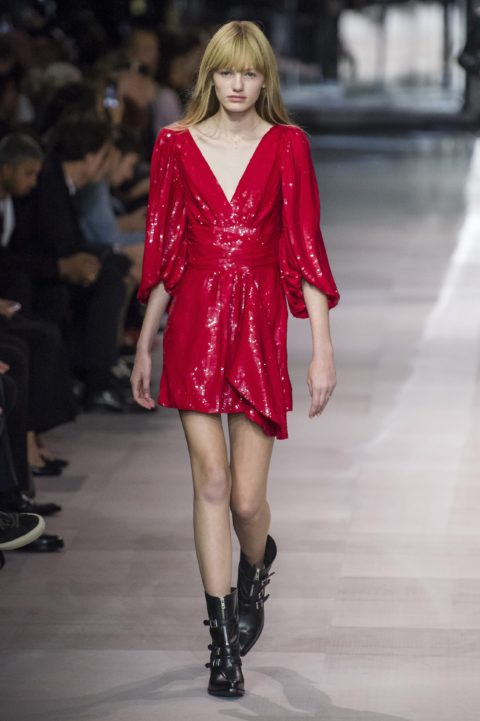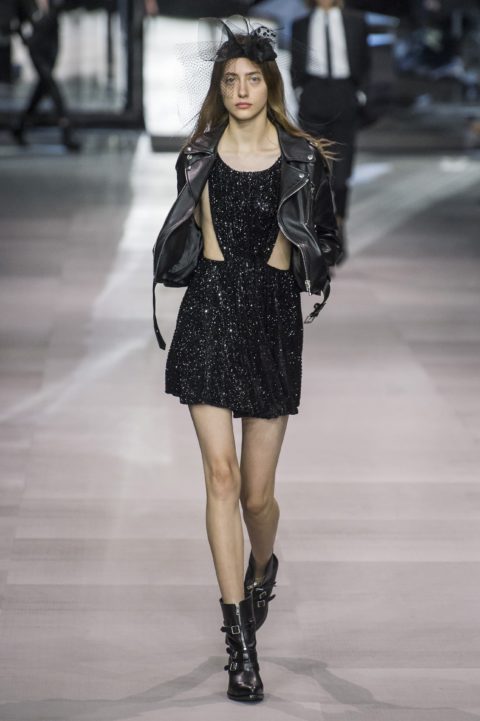Hedi Slimane’s Celine is Basically Hedi Slimane
Sadly, there is not a trace of the Céline DNA to be found in this collection.
As if this day couldn’t get any worse, as if women around the world weren’t already feeling simultaneously enraged and deflated after Christine Blasey Ford and Brett Kavanaugh’s testimonies in Washington yesterday, and nursing an emotional hangover the likes of which we haven’t collectively experienced since November 9, 2016, today Hedi Slimane presented his first collection for Celine.
I suppose it makes some sort of twisted poetic sense that today was the day a fashion label beloved by women for its feminism, its eccentricity, its rich and nuanced understanding of how smart, accomplished women wanted to dress was laid to rest. At the hands of a man, no less. The Céline we knew and loved, led by a strong-willed and endlessly fascinating Phoebe Philo, is gone and what we have in its stead is a far cry from an intuitive manifestation of the way women want to dress. Slimane’s Celine is how men want women to dress. It’s barely-there mini dresses, it’s swinging and sparkly skirts, it’s shrunken leather jackets, it’s see-through blouses.
And to make matters worse, it’s nothing new. It’s Hedi Simane’s Saint Laurent, just by another name. In fact, if you were to place any of Slimane’s collections for Saint Laurent side by side with what he sent down the runway today, it would be near-impossible to tell them apart (a fact that has already begun to inspire a cavalcade of memes on Twitter). Sadly, there is not a trace of the Céline DNA to be found in this collection, and presumably, in the collections going forward. Slimane did give us fair warning, I suppose, telling French newspaper Le Figaro in his first post-Celine-announcement interview just days ago, that “at Celine, the weight of the past is not as strong as at Dior or Saint Laurent. We can break free of it more easily.” Break free he did. But I think he’s wrong in assuming that Céline’s past will not haunt him. He has markedly underestimated just what this brand meant to women around the world. Whether we could afford to buy this brand or not, whether we admired it from near or far, the house of Céline, under Philo’s leadership, was a reflection of women’s truest selves, a reflection of the way we see ourselves in the fantasy reel of our own heads. It was women dressing for themselves, in clothes that made them feel powerful and empowered, and also feminine and graceful. Philo’s Céline was bursting with personality, it was the sartorial embodiment of an inside joke, something that only women could understand, that was truly ours.
Slimane has tossed all of that out, but perhaps that’s a good thing. Perhaps this is the jolt we needed, the sense of detachment and distance we needed to put between ourselves and the Céline we once loved. Because now we can finally let it go.


















